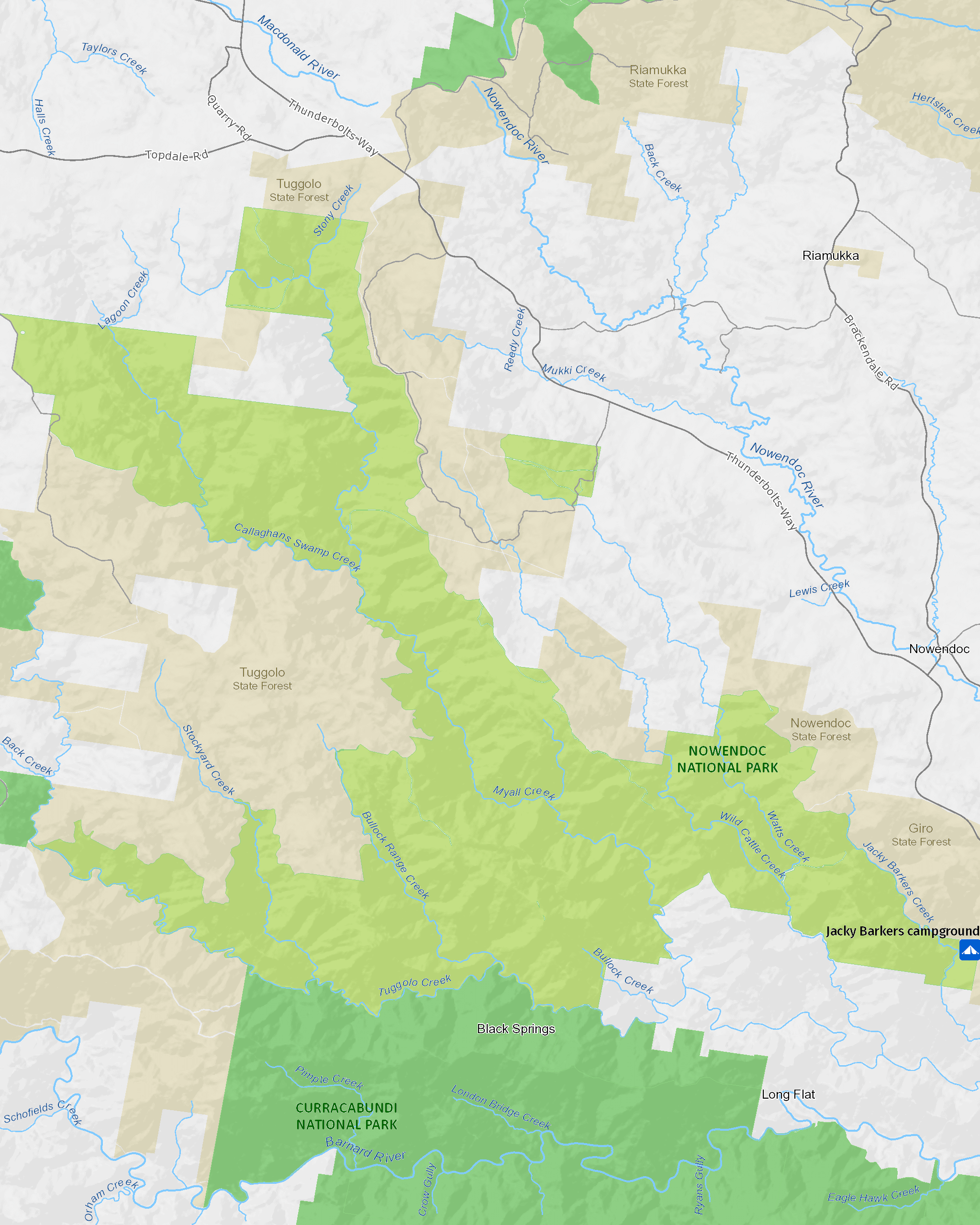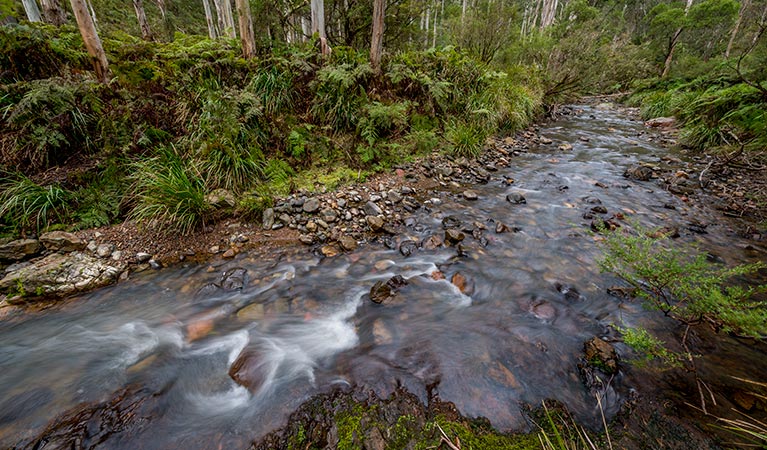Nowendoc National Park
Overview
Offering picnics, bushwalking, birdwatching and bush camping in the NSW Northern Tablelands, beautiful Nowendoc National Park sits off Thunderbolts way, near Walcha.
Read more about Nowendoc National Park
Beautiful Nowendoc National Park sits in rugged escarpment terrain in the NSW Northern Tablelands, 70km south of Walcha. Boasting spectacular diverse scenery, including moist eucalypt forest with rainforest hugging the creek lines, the park offers ample opportunity for quiet recreation.
Experience bushwalking amongst wildflowers and visit nearby canyons and waterfalls. Enjoy birdwatching and have a picnic or take a dip. The park’s creeks run throughout the year, though winter swimming is only for the brave.
Accessible only by 4WD, Nowendoc National Park protects a range of threatened plants and animals and is also known for its Aboriginal and pastoral heritage.
Campers seeking solitude will love the tranquil surroundings of Jacky Barkers campground, where you’ll find picnic tables and other facilities. You can also stay at nearby Karamea Homestead, in neighbouring Curracabundi National Park.
Local alerts
For the latest updates on fires, closures and other alerts in this area, see https://www.nationalparks.nsw.gov.au/visit-a-park/parks/nowendoc-national-park/local-alerts
Contact
- in the North Coast and Country NSW regions
Nowendoc National Park is always open but may have to close at times due to poor weather or fire danger.
-
-
Walcha office
02 6777 4700
Contact hours: Monday to Friday, 8.30am to 4.30pm. - 188W North Street, Walcha NSW 2354
-
Email: npws.nea@environment.nsw.gov.au
-
Walcha office
Visitor info
All the practical information you need to know about Nowendoc National Park.
Map

Map legend

Maps and downloads
Nearby towns
Gloucester (72 km)
Famous for gold deposits and the bushranger Captain Thunderbolt, Gloucester is located in the north Hunter region, east of Barrington Tops. The nearby state forests and national parks are ideal for walking, camping and outdoor adventure sports.
Walcha (79 km)
Walcha is the gateway to some of the best adventure experiences in Australia. Expect gorges, rainforests, waterfalls and wilderness. Enjoy helicopter flights, 4WD tours and fishing, as well as guided bushwalks in some of Australia's most rugged terrain.
Armidale (143 km)
During autumn the parks and gardens around Armidale show their beautiful colours. Enjoy a drive along the Waterfall Way, stopping at waterfalls and craggy gorges in the rugged countryside.
Learn more
Nowendoc National Park is a special place. Here are just some of the reasons why:
An intriguing history

Discover the area’s rich Aboriginal heritage and European settlement history. Jacky Barkers Creek has a special connection with one Aboriginal family, the Wrights. You can visit Wrights Hut, built in the early 1960s from materials recycled from older slab huts nearby. In 1837, the Australian Agricultural Company (AAC) established Nowendoc Station, and in 1846 the AAC reached the top of Hungry Hill immediately east of Jacky Barkers Creek.
Beautiful waterways

In Nowendoc National Park, it’s impossible not to be tempted by the cool, clear waters of Myall and Jacky Barkers creeks. Take your pick of streams and rock pools, and swim in the shade of river oaks. The park also protects the headwaters of the Barnard River – a major tributary of the Manning River, first explored by European explorer, Henry Dangar.
Impressive and important

Nowendoc National Park is not only beautiful to look at, it also serves a very important purpose – protecting old growth forest and other plants and animals. The park is home to five threatened plants and 18 threatened animal species. You may be lucky enough to spot an endangered brush-tailed rock wallaby or spotted-tail quoll, while a night walk could give you glimpses of threatened masked, powerful or sooty owls. Surveys have also recorded seven species of frog, 14 species of reptile, 78 native bird species, 19 native mammals and 14 species of bat in this park. Be sure to tread carefully as you walk, and don’t forget those binoculars if you’d like to go bird watching.
Simplicity and solitude

This rugged, remote park gives you the opportunity to feel at one with both nature and your thoughts. There are so many ways to experience the park’s diverse natural beauty. Breathe the pure air and feel the temperature drop as you travel down to the valley floor.
Education resources (1)
What we're doing
Nowendoc National Park has management strategies in place to protect and conserve the values of this park. View the detailed park and fire management documents.

